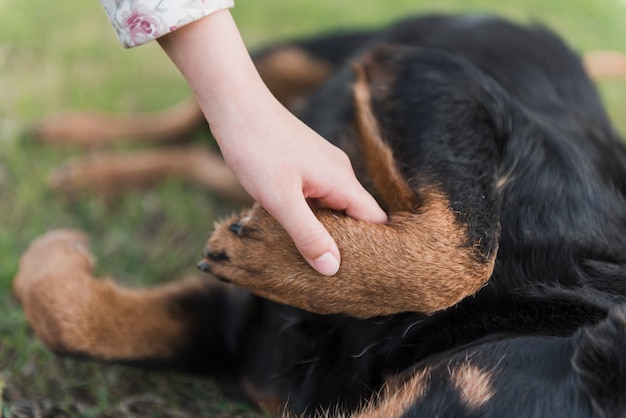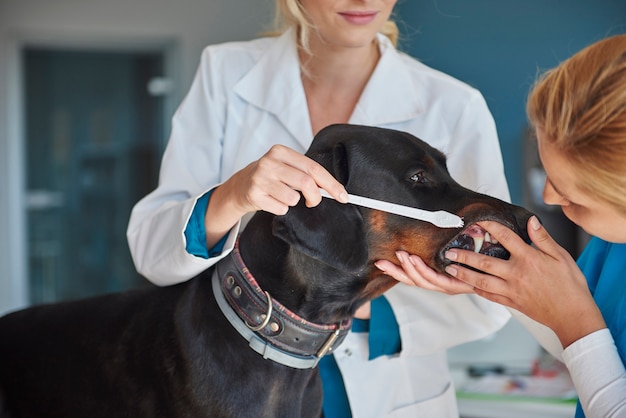Limping in Pets: When to Seek Help From Your Grand Prairie Vet


Limping in Pets: When to Seek Help From Your Grand Prairie Vet
If you’ve noticed your dog or cat suddenly favoring a leg, slowing down on walks, or struggling to jump onto their favorite spot on the couch, you’re certainly not alone. Limping in pets is a common concern for Grand Prairie pet owners, and it can cause worry about your companion’s comfort and long-term health. At Gully Animal Hospital of Grand Prairie, our team understands how distressing it is to see your beloved pet in pain or unable to move as they usually do. This blog will guide you through recognizing the signs of limping in pets, understanding possible causes, and knowing when it’s time to schedule a visit with your Grand Prairie veterinarian.
We will discuss practical tips for supporting your pet at home, explore treatment options available at our full-service veterinary hospital, and clarify when professional intervention is needed. Whether you’re searching for "vet near me" or specific orthopedic veterinary services in Grand Prairie, our veterinary team is here to help restore your pet’s comfort and mobility. For pets experiencing sudden or persistent lameness, our orthopedic veterinary services for pets, including lameness and mobility issues can provide answers and relief. Let’s explore what to watch for and how you can best support your pet’s journey back to healthy movement.
Recognizing Limping in Pets: What to Watch For
Pets aren’t always vocal about their pain, so it’s important to recognize the subtle and obvious signs that something is wrong. Limping in pets can look different for each animal. Some dogs or cats may hold up a paw, avoid putting weight on a limb, or show a noticeable “skip” in their step. Others might simply move more slowly, hesitate before climbing stairs, or avoid jumping and playing. Key symptoms include favoring one leg, stiffness after resting, crying or whining when touched in certain areas, and visible swelling or heat around a joint. Additionally, you might notice changes in your pet’s mood, such as irritability, reduced appetite, or withdrawal from family activities.
If your pet’s limp came on suddenly, seems severe, or is accompanied by bleeding, visible wounds, or an inability to rise, the situation is urgent and requires immediate attention. Chronic limping that appears gradually is also a sign that your pet may need a professional evaluation to prevent further injury or discomfort. Recognizing these early signs and seeking timely veterinary diagnostics in Grand Prairie can make a significant difference in your pet’s recovery and quality of life.
Common Causes of Limping in Dogs and Cats
When considering why your pet may be limping, it’s helpful to understand that a wide range of issues could be at play. Acute injuries are among the most common causes and can result from slips, falls, rough play, or even stepping on something sharp. Wounds, broken nails, sprains, strains, or bruising can cause sudden limping. In active or large breed dogs, ligament injuries such as cranial cruciate ligament (CCL) tears are frequently diagnosed. For cats, getting a paw caught or landing awkwardly from a jump may lead to limping as well.
Chronic or slowly developing limping is often linked to conditions like arthritis, hip dysplasia, or patellar luxation. Infections, joint inflammation, and even certain systemic diseases can also contribute to mobility issues. Sometimes, foreign objects like thorns or foxtails become embedded between the toes, causing discomfort. Bone fractures or dislocations are more serious and typically present with pronounced pain, swelling, and inability to use the limb. The Texas climate, with its hot summers, can also contribute to paw pad burns or injuries from outdoor terrain, which are more prevalent in pets spending time outside.
It’s important to remember that while some limping improves with brief rest, underlying causes rarely resolve on their own. If you’re wondering "when to see a vet for limping," especially if the lameness is severe, persistent, or accompanied by other symptoms, prompt evaluation at a veterinary hospital in Grand Prairie is key.
How Limping Is Diagnosed and Treated in Grand Prairie
When your pet arrives at Gully Animal Hospital of Grand Prairie for a limp, our veterinarians begin with a thorough history and physical examination. We observe your pet’s gait, assess range of motion, and gently palpate the affected area to determine the source of discomfort. Diagnostic tools such as digital radiology, orthopedic evaluation, and, if needed, advanced imaging or laboratory tests help us pinpoint the exact cause.
Treatment options depend on the diagnosis and your pet’s individual needs. For mild sprains, strains, or soft tissue injuries, rest, restricted activity, and anti-inflammatory medications may be recommended. Pain management is always a priority, and our pain management services for pets experiencing discomfort or limping are tailored to each animal’s condition and comfort level.
If your pet’s limping is due to a ligament injury, such as a CCL tear, surgical intervention may be necessary. Our veterinary team offers CCL (cranial cruciate ligament) repair surgery for dogs and cats with lameness as well as other specialized procedures, such as femoral head ostectomy (FHO) for severe hip problems. For pets who have experienced fractures or dislocations, we provide veterinary care for fractures and dislocations in pets with advanced orthopedic techniques to restore mobility and function.
Other treatment approaches may involve wound care, removal of foreign objects, joint supplements, weight management, or physical therapy as part of a comprehensive orthopedic care plan. Our goal is always to address the root cause of limping while prioritizing your pet’s comfort, mobility, and long-term health.
Home Care and Prevention: Supporting Your Pet’s Recovery
While professional veterinary care is essential for diagnosing and treating limping in pets, there are steps you can take at home to support your pet’s healing and reduce the risk of future injuries. For minor limps, restricting activity by avoiding stairs, limiting running or jumping, and providing a soft, supportive bed can help prevent further strain. Applying a cool compress to an injured area may reduce swelling in the short term, but always consult your veterinarian before attempting any home remedies.
Prevention of limping begins with regular exercise that matches your pet’s age, breed, and activity level. Avoiding slippery floors, ensuring your backyard is free of hazards, and inspecting your pet’s paws after walks are practical ways to minimize injury risk. Maintaining a healthy weight is also vital, as excess pounds put additional stress on joints and ligaments. For older pets or those with known orthopedic concerns, joint supplements and supportive therapies can help maintain mobility and comfort.
Scheduling regular check-ups with your Grand Prairie veterinarian is the best way to catch potential problems early and keep your pet’s musculoskeletal system healthy. If you’re searching for "pet diagnostics near me" or need guidance on preventive orthopedic care, our comprehensive wellness exams and physical evaluations for pets offer tailored advice and early intervention for mobility concerns.
When to See a Vet for Limping: Clear Signs You Need Help
Determining when to see a vet for limping can be challenging, especially if your pet tries to hide their discomfort. As a general guideline, any limp that lasts longer than 24 hours, worsens with time, or is accompanied by other signs such as swelling, heat, open wounds, or behavioral changes should prompt a call to your veterinarian. If your pet refuses to put any weight on a limb, cries out in pain, or has suffered obvious trauma, immediate veterinary attention is necessary.
Sudden, severe lameness, bleeding, or a limb that appears deformed or at an unnatural angle are emergencies and should not wait. Chronic limping, even if mild, often signals underlying joint disease or orthopedic issues that benefit from early intervention. The sooner your pet receives veterinary diagnostics in Grand Prairie, the better their chances for a smooth recovery.
Our veterinary professionals are committed to providing quality veterinary services near me, ensuring your companion receives the care they need when they need it most. For more information about urgent care or after-hours support, consult reputable resources such as the American Veterinary Medical Association’s pet first aid guidelines or contact our clinic directly.
Compassionate Care for Limping Pets in Grand Prairie
Watching your pet struggle with limping can be stressful, but you don’t have to navigate this challenge alone. At Gully Animal Hospital of Grand Prairie, our team of veterinarians is dedicated to helping dogs and cats regain their comfort and mobility with compassionate, comprehensive care. Whether your pet needs a detailed orthopedic evaluation, advanced surgical intervention, or supportive pain management, we are your trusted partner for pet diagnostics Grand Prairie and surrounding communities rely on.
If you’re searching for a "vet near me" who understands the unique needs of your pet and provides expert orthopedic veterinary services in Grand Prairie, we invite you to schedule an appointment today. You can easily request a comprehensive pet exam or learn more about our orthopedic veterinary services for pets, including lameness and mobility issues on our website.
Don’t let your companion’s comfort wait. Call us at (214) 412-2462 or visit us at 2942 West Camp Wisdom Rd, Grand Prairie, TX 75052 to schedule an appointment. Our veterinary team is here to support you and your pet every step of the way, offering the highest quality veterinary diagnostics in Grand Prairie and the personal attention your pet deserves.


















